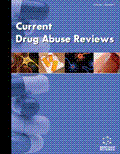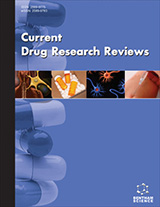Abstract
The literature on the two main models of addiction (dopamine-based positive reinforcement and stress-based negative reinforcement models) have made many important contributions to understanding this brain disorder. However, rarely has there been a comprehensive critique of the limitations of both models. This article seeks to resolve theoretical issues inherent to each model, as well as propose a more comprehensive psycho-neuro-endocrinological theory of addiction which reconciles important elements of both. We suggest that there is not only direct interaction of dopaminergic and stress systems throughout the addiction cycle, from initial use, via the abusing stage, to the endpoint of addiction, but that this interaction is present prior to initial use. A combination of genetic factors and/or experiences of adversity may result in a stress-triggered sensitisation of dopaminergic networks which is present before the onset of substance use, which cannot be explained solely in terms of dopaminergic (positive) reinforcement. Rather these processes are best explained by an allostatic model which reconciles aspects of both models of addiction and shows how dopamine/stress interactions become increasingly pathological in the addiction cycle. Our model suggests that chronic stress eventually creates baseline hypodopaminergic activity, but also prompts dopaminergic hyperactivity in cue reactivity. This is the neural marker of allostatic mechanisms observed at endpoint addiction. We propose a multi-circuit explanation of how this cumulative effect of stress increasingly impacts on dopaminergic networks of reward, affect, attention, memory and behavioural control. This revised model provides a useful frame of reference for further research and ultimately clinical practice.
Keywords: Addiction, dopamine, negative, positive, reinforcement, stress.
Current Drug Abuse Reviews
Title:Combining Stress and Dopamine Based Models of Addiction: Towards a Psycho-Neuro-Endocrinological Theory of Addiction
Volume: 9 Issue: 1
Author(s): James H. Johnston, David E.J. Linden and Marianne B.M. van den Bree
Affiliation:
Keywords: Addiction, dopamine, negative, positive, reinforcement, stress.
Abstract: The literature on the two main models of addiction (dopamine-based positive reinforcement and stress-based negative reinforcement models) have made many important contributions to understanding this brain disorder. However, rarely has there been a comprehensive critique of the limitations of both models. This article seeks to resolve theoretical issues inherent to each model, as well as propose a more comprehensive psycho-neuro-endocrinological theory of addiction which reconciles important elements of both. We suggest that there is not only direct interaction of dopaminergic and stress systems throughout the addiction cycle, from initial use, via the abusing stage, to the endpoint of addiction, but that this interaction is present prior to initial use. A combination of genetic factors and/or experiences of adversity may result in a stress-triggered sensitisation of dopaminergic networks which is present before the onset of substance use, which cannot be explained solely in terms of dopaminergic (positive) reinforcement. Rather these processes are best explained by an allostatic model which reconciles aspects of both models of addiction and shows how dopamine/stress interactions become increasingly pathological in the addiction cycle. Our model suggests that chronic stress eventually creates baseline hypodopaminergic activity, but also prompts dopaminergic hyperactivity in cue reactivity. This is the neural marker of allostatic mechanisms observed at endpoint addiction. We propose a multi-circuit explanation of how this cumulative effect of stress increasingly impacts on dopaminergic networks of reward, affect, attention, memory and behavioural control. This revised model provides a useful frame of reference for further research and ultimately clinical practice.
Export Options
About this article
Cite this article as:
Johnston H. James, Linden E.J. David and van den Bree B.M. Marianne, Combining Stress and Dopamine Based Models of Addiction: Towards a Psycho-Neuro-Endocrinological Theory of Addiction, Current Drug Abuse Reviews 2016; 9 (1) . https://dx.doi.org/10.2174/1874473709666151209113913
| DOI https://dx.doi.org/10.2174/1874473709666151209113913 |
Print ISSN 1874-4737 |
| Publisher Name Bentham Science Publisher |
Online ISSN 1874-4745 |
 82
82 6
6Related Articles
-
Conference Report: The Myriad Pathways of Neurodegeneration Discussed at NEUROCON 2015
Current Aging Science Interconnection of Estrogen/Testosterone Metabolism and Mevalonate Pathway in Breast and Prostate Cancers
Current Molecular Pharmacology EDITORIAL
Current Drug Therapy Prevention and Treatment of Cardiovascular Disease in Adolescents and Adults through the Transcendental Meditation® Program: A Research Review Update
Current Hypertension Reviews Role of PI3 Kinase Gamma in Excitation-Contraction Coupling and Heart Disease
Cardiovascular & Hematological Disorders-Drug Targets Evaluation of Osteoporosis Risk Associated with Chronic Use of Morphine, Fentanyl and Tramadol in Adult Female Rats
Current Drug Safety The Control of Male Sexual Responses
Current Pharmaceutical Design A Rational Approach on the Use of Sex Steroids in Multiple Sclerosis
Recent Patents on CNS Drug Discovery (Discontinued) Safety and Efficacy of Baclofen in the Treatment of Alcohol-Dependent Patients
Current Pharmaceutical Design Use of Corticosteroids in Critically Ill Septic Patients: A Review of Mechanisms of Adrenal Insufficiency in Sepsis and Treatment
Current Drug Targets The Impact of Nandrolone Decanoate on the Central Nervous System
Current Neuropharmacology Biochemical, Biomedical and Metabolic Aspects of Imidazole-Containing Dipeptides with the Inherent Complexity to Neurodegenerative Diseases and Various States of Mental Well-Being: A Challenging Correction and Neurotherapeutic Pharmaceutical Biotechnology for Treating Cognitive Deficits, Depression and Intellectual Disabilities
Current Pharmaceutical Biotechnology Merging Transport Data for Choroid Plexus with Blood-Brain Barrier to Model CNS Homeostasis and Disease More Effectively
CNS & Neurological Disorders - Drug Targets Autonomic Dysfunction and Depression: A Biomarker of MDD Across the Life Span
Current Psychiatry Reviews Pitx2 Expression Promotes p21 Expression and Cell Cycle Exit in Neural Stem Cells
CNS & Neurological Disorders - Drug Targets Interactions Between Cholinergic and Fibroblast Growth Factor Receptors in Brain Trophism and Plasticity
Current Protein & Peptide Science Nature Against Depression
Current Medicinal Chemistry Neuropeptides and Other Chemical Mediators, and the Role of Anti-inflammatory Drugs in Primary Headaches
Anti-Inflammatory & Anti-Allergy Agents in Medicinal Chemistry Serum DHEA-S, Testosterone and Cortisol Levels in Female Patients with Schizophrenia
Endocrine, Metabolic & Immune Disorders - Drug Targets Hormonal Control of the Neuropeptide Y System
Current Protein & Peptide Science
















